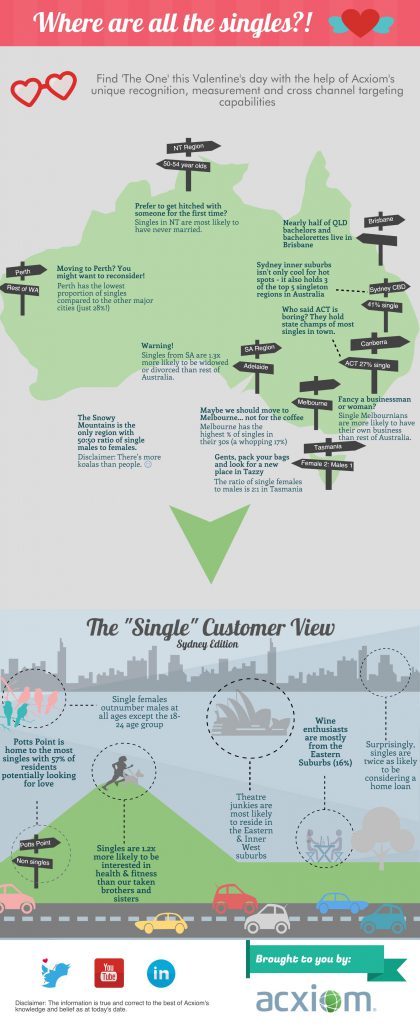Dating is big business. There are generic dating sites designed to help you find a date, a life partner or someone just to hang out with. There are also incredibly focused dating sites that are designed to introduce you to other people who have the same particular passions and interests as you. Maybe you are looking for a “sea captain” or perhaps you just hate it when Movember finishes and need to sate your passion for the tache. Whatever the case, if you look hard enough you’re bound to find a dating site designed just for people like you (yes, you crazy cat lady).
In many ways, the challenge of dating is the same challenge that marketers face. We’re all looking for that one-to-one connection – though often we struggle to a way to meet and start a conversation. In both cases (marketing and dating), digital disruption is creating both opportunities and challenges. And at the heart of this is data.
Inga Ting reveals that what we say in our dating profiles and what we want are often completely different. Dating sites – just like data-driven marketers – are less interested in “stated intentions” and more interested in actual behaviour. By looking at online behaviour – the things that we like, connect with, share and return to – marketers can adjust their profiling to reach and more deeply engage potential customers. This algorithmic approach relies not on focus groups and market research but on an adaptive approach which operates between your stated profile (self designed) and the actions you take online. In the world of online dating it means operating in-between spaces:
Behaviour-based matching is adaptive. It compares what you said you wanted with how you behave to work out things you might not even know about yourself.
For example, you said you wanted a partner with a steady income but you keep messaging “pro-bono computer game testers” and “freelance writers”, so the algorithm changes its recommendations.
But, of course, while there can be volumes of data about ourselves online – we are also highly visual. The rise of photo based apps like Tinder for example shows that sometimes dating (and even marketing) is only skin deep. Relying on your photo and your location information, Tinder matches people based on whether they are close and interested (you swipe a prospective date’s photo to the left to reject and to the right to connect).
For those who are serious about dating, perhaps a single app is not the answer. The “multichannel” approach that works for marketers may yield better results. Take for example, the data from Axciom’s infographic (ht Will Scully-Power) that reveals that, in Sydney:
- Single females outnumber males at all ages except the 18-24 age group
- Potts Point is home to the most singles
- Wine enthusiasts are most likely to reside in the Eastern and Inner West suburbs
If you were a male in the highly competitive 18-24 age group, a multichannel (or omnichannel) marketing approach to maximising your chances would include:
- Establishing your base profiles on high traffic sites
- Create a profile image that shows your passion for fitness and interest in fine wine (please be tasteful)
- Spend time in cafes in Potts Point using Tinder
Of course, you could pepper your profile with quotes from Shakespeare, but that may be overkill. Remember, that the algorithms will override your stated profile anyway – so your true intentions will always be revealed in the data – based on who you swipe right and who you swipe left, who you message, like and connect with. And like all good marketing, the question comes down to ROI, engagement and outcomes. I hope you get your algorithm right!


